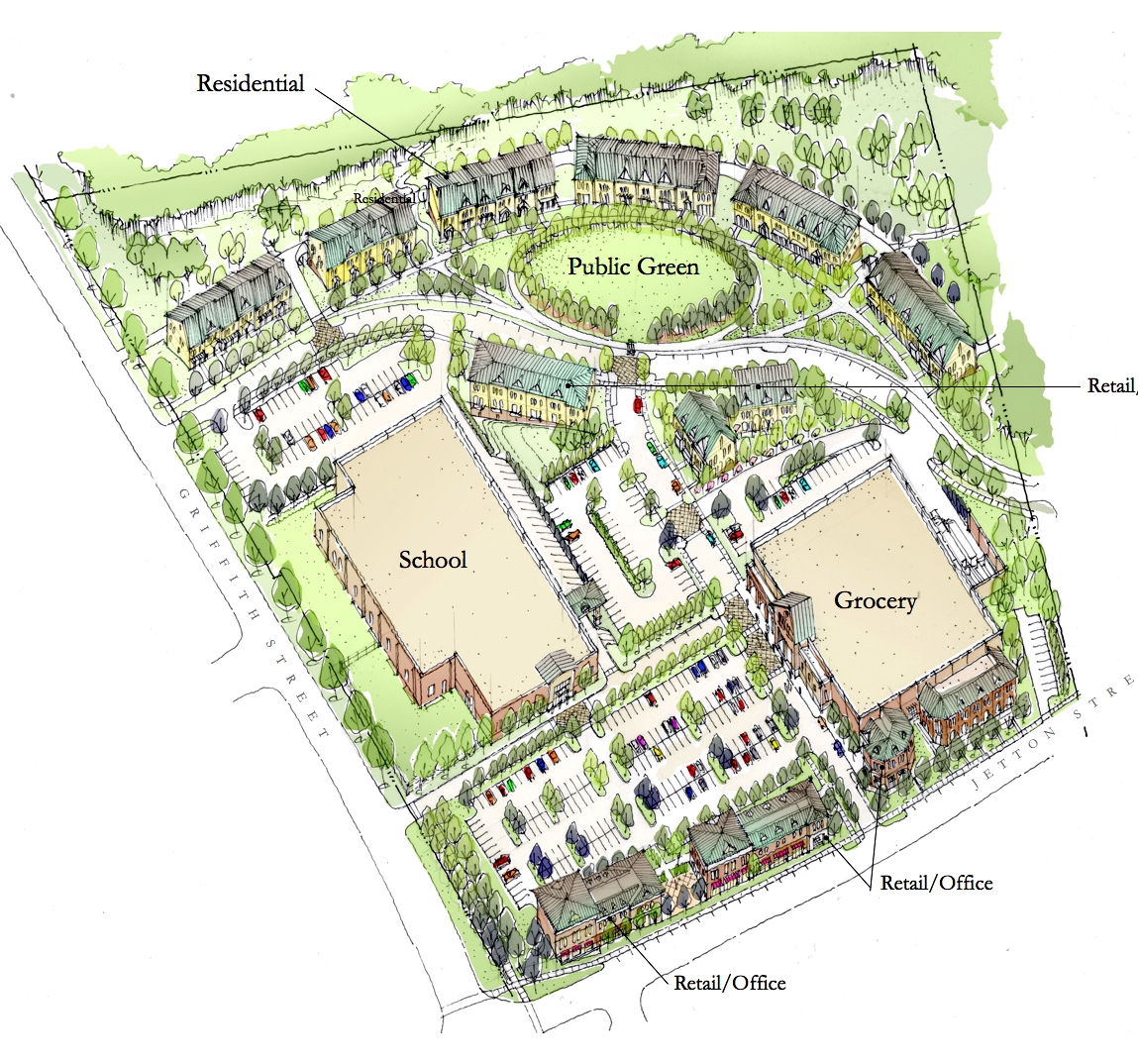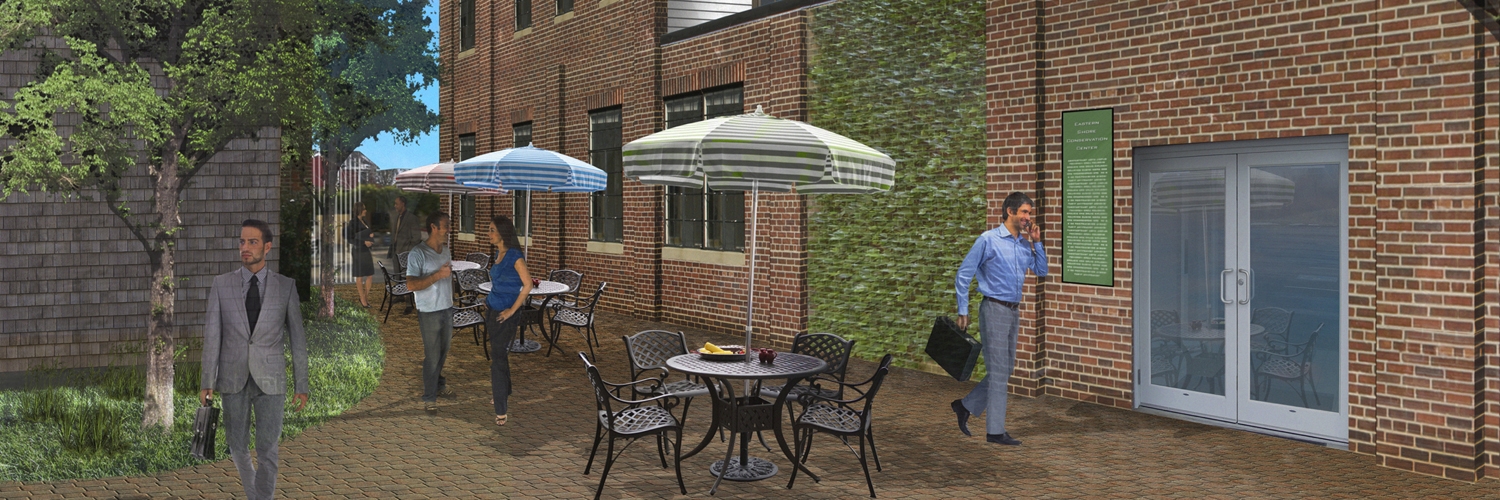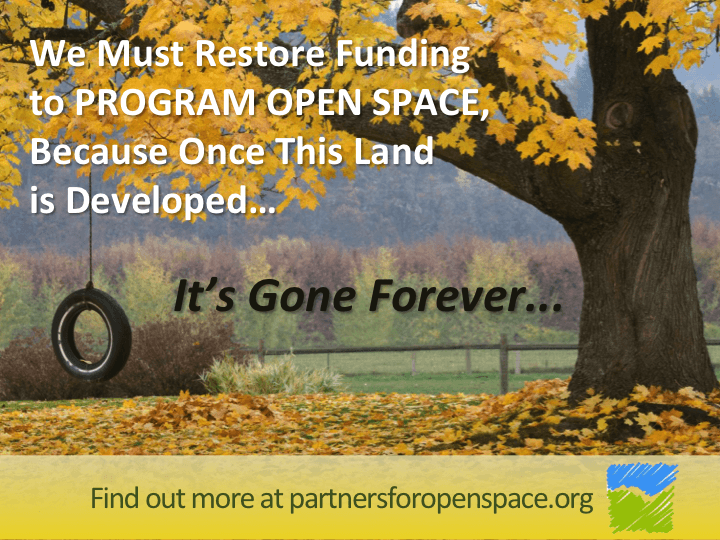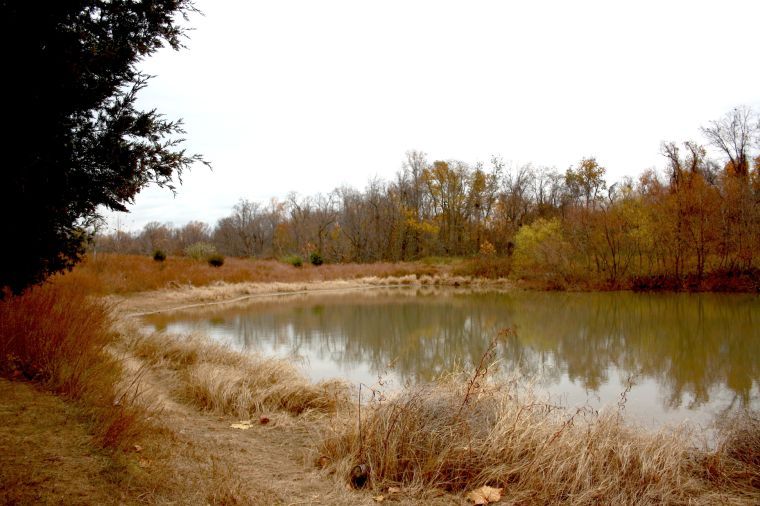Food for Thought: Big Box Design
Buzz around Easton about the potential Harris Teeter development has us thinking about interesting ways supermarkets and other large retailers build stores with the community and the environment in mind. The U.S. Green Building Council’s Leadership in Energy and Environmental Design (LEED) program is a great place to start for a new construction retail store. The LEED Retail program focuses on exterior elements (such as stormwater management and modes of transportation) and interior elements (such as energy management systems, indoor air quality, and materials reuse). Harris Teeter already has multiple LEED-certified store, including a few in Maryland. Read more about for the specific case studies in Baltimore and Olney. There are opportunities to help superstores contribute more to the community. Prioritizing walkability and connectivity is an important factor for many small towns. Some stores choose to do this by locating parking lots behind stores. Examples of this type of design in Easton include the Tidewater Inn, the former McCord building (soon to be the Eastern Shore Conservation Center), and the town office on South Harrison St. Without a giant expanse of parking space, pedestrians can more easily access shops and services. Sharing parking with nearby retailers also requires less paving, saving money and opening up space for public green space. Instead of orienting a development toward cars, many retailers choose to make people the focus. Sidewalks can replace roadways for cars. Check out Denver’s approach and Davidson, North Carolina’s layout (below) for creating these types of developments and demonstrating how living streets are important for future commercial areas. Photo courtesy of Little Consulting Conserving some of this land would leave more open space, which is not only aesthetically pleasing but great for the environment! Reduced impervious surface cover (e.g., roads and parking lots) means less stormwater runoff after a big rain and less pollution in the










